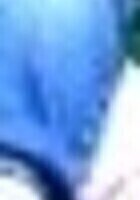All Introduction to Proofs Resources
Example Questions
Example Question #1 : Functions, Relations, & Cardinality
If
Find the cardinality of
The question is asking us to find the number of elements in the intersection of B and B .
We simply find the common elements of the two sets, and count the number of elements.
Now we simply count the number of elements in this set.
Example Question #1 : Intro To Proofs
If
Find the cardinality of 
The question is asking us to find the number of elements in the intersection of A and B .
We simply find the common elements of the two sets, and count the number of elements.
Now we simply count the number of elements in this set.
Example Question #1 : Functions, Relations, & Cardinality
If
Find the cardinality of 
The question is asking us to find the number of elements in the union of A and A .
We simply combine the two sets together, and count the number of elements. If there are any elements that are the same, we keep one of them, and not both.
Now we simply count the number of elements in this set.
Example Question #2 : Intro To Proofs
If
Find the cardinality of 
The question is asking us to find the number of elements in the intersection of B and B .
We simply find the common elements of the two sets, and count the number of elements.
Now we simply count the number of elements in this set.
Example Question #3 : Intro To Proofs
If
Find the cardinality of 
The question is asking us to find the number of elements in the intersection of A and B .
We simply find the common elements of the two sets, and count the number of elements.
Now we simply count the number of elements in this set.
Example Question #4 : Intro To Proofs
If
Find the cardinality of 
The question is asking us to find the number of elements in the union of B and A .
We simply combine the two sets together, and count the number of elements. If there are any elements that are the same, we keep one of them, and not both.
Now we simply count the number of elements in this set.
Example Question #3 : Functions, Relations, & Cardinality
If
Find the cardinality of 
The question is asking us to find the number of elements in the union of A and A .
We simply combine the two sets together, and count the number of elements. If there are any elements that are the same, we keep one of them, and not both.
Now we simply count the number of elements in this set.
Example Question #4 : Functions, Relations, & Cardinality
If
Find the cardinality of 
The question is asking us to find the number of elements in the intersection of A and B .
We simply find the common elements of the two sets, and count the number of elements.
Now we simply count the number of elements in this set.
Example Question #1 : Intro To Proofs
If
Find the cardinality of 
The question is asking us to find the number of elements in the intersection of A and A .
We simply find the common elements of the two sets, and count the number of elements.
Now we simply count the number of elements in this set.
Example Question #2 : Functions, Relations, & Cardinality
If
Find the cardinality of 
The question is asking us to find the number of elements in the union of A and A .
We simply combine the two sets together, and count the number of elements. If there are any elements that are the same, we keep one of them, and not both.
Now we simply count the number of elements in this set.
Certified Tutor
Certified Tutor
All Introduction to Proofs Resources





















































































